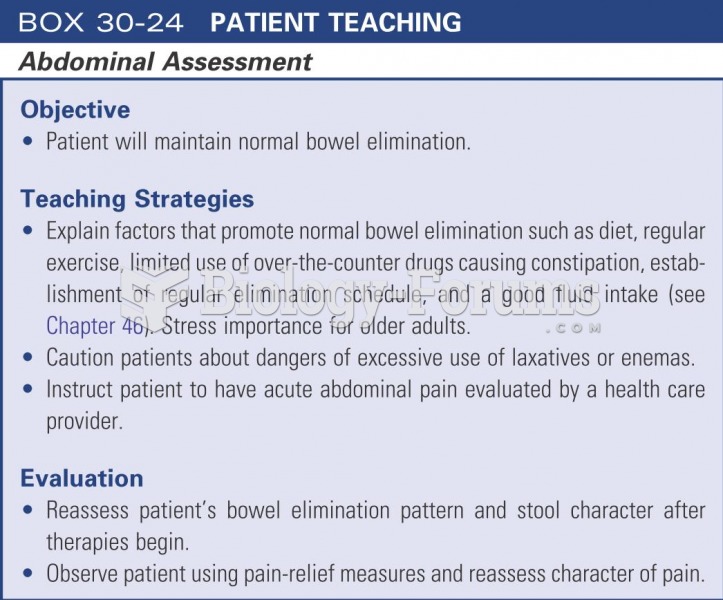|
|
|
Human stomach acid is strong enough to dissolve small pieces of metal such as razor blades or staples.
The ratio of hydrogen atoms to oxygen in water (H2O) is 2:1.
When blood is exposed to air, it clots. Heparin allows the blood to come in direct contact with air without clotting.
After a vasectomy, it takes about 12 ejaculations to clear out sperm that were already beyond the blocked area.
Once thought to have neurofibromatosis, Joseph Merrick (also known as "the elephant man") is now, in retrospect, thought by clinical experts to have had Proteus syndrome. This endocrine disease causes continued and abnormal growth of the bones, muscles, skin, and so on and can become completely debilitating with severe deformities occurring anywhere on the body.







